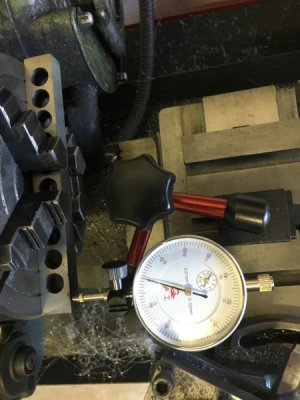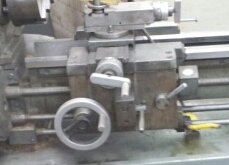- Joined
- Jul 2, 2014
- Messages
- 7,594
Remember that the surface feet per minute cutting speed decreases as the diameter of the work decreases. It is very common for what you are experiencing to happen. Try a faster spindle speed as the tool gets closer to the center of the work. Going beyond center is a good way to damage the tool, don't go there...Interesting. Thanks Bob
I just took a facing cut on a Ø 6".
Up to the center there was .0008" and past that an additional .001".
I'm going to go back out monkey around some. I might change to my 3J and try again.
I tried the cut first with my modified 1.25" tool holder. It cut nice until about one third in then got bad, rough.
Not sure what was going on there but maybe the piece moved a little.



